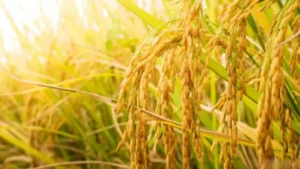India, with its extensive network of rivers, holds a multitude of stories and cultural significance. Among these rivers, the Brahmaputra holds a unique title—the “Red River” of India. This article delves into the various aspects of the Brahmaputra River, explaining why it is referred to as the Red River and exploring its significance.
Which Indian River is Known as the “Red River”?
The Brahmaputra River, flowing through the northeastern state of Assam in India, is known as the “Red River.” This nickname arises from the reddish hue of its waters, attributed to the rich alluvial soil and sediment it carries from the Tibetan plateau and the Himalayas. The river’s unique coloration and significance make it a vital and cherished natural asset in the region.
Why the Brahmaputra River is Known as the “Red River”?
The name “Red River” may conjure thoughts of crimson rivers, but the reality is far more intriguing. The Brahmaputra derives its name from the rich alluvial soil it transports along its voyage. The river originates on the Tibetan plateau and collects large volumes of sediment as it runs through the Himalayas’ difficult terrains. These sediments give the water a reddish tint, hence the evocative term.
A Lifeline for Communities
Beyond its scenic attractiveness, the Brahmaputra provides a lifeline for innumerable towns along its banks. Its fertile plains support abundant agriculture, which provides livelihoods and fosters cultural diversity. The river’s richness not only provides food, but it also allows trade and transportation, linking distant places and stimulating economic progress.
Ecological Marvel
The Brahmaputra ecosystem is a biodiversity hotspot, with an abundance of vegetation and wildlife. The river’s different environments provide sanctuary to a variety of wildlife, including majestic elephants and elusive river dolphins. Furthermore, its wetlands and floodplains serve a critical role in flood mitigation and groundwater replenishment, making it a valuable natural asset.
Challenges and Conservation Efforts
Despite its beauty, the Brahmaputra faces numerous issues, including pollution, deforestation, and climate change. Rapid urbanization and industry put pressure on its fragile habitat, jeopardizing its natural balance. However, coordinated conservation initiatives seek to protect this natural heritage by pushing for sustainable practices and raising awareness of its significance.




 What was the Old Name of Goa? Know About...
What was the Old Name of Goa? Know About...
 Top-10 Most Searched Words in 2025, Chec...
Top-10 Most Searched Words in 2025, Chec...
 Which Crop is known as the Backbone of I...
Which Crop is known as the Backbone of I...







